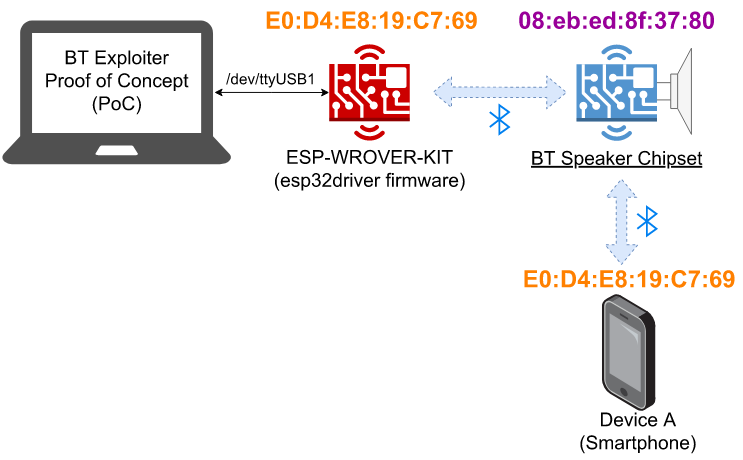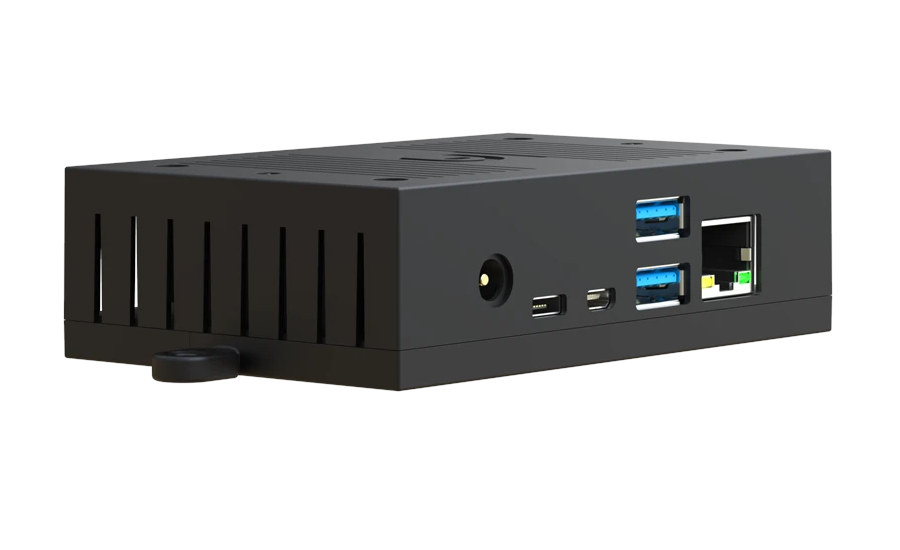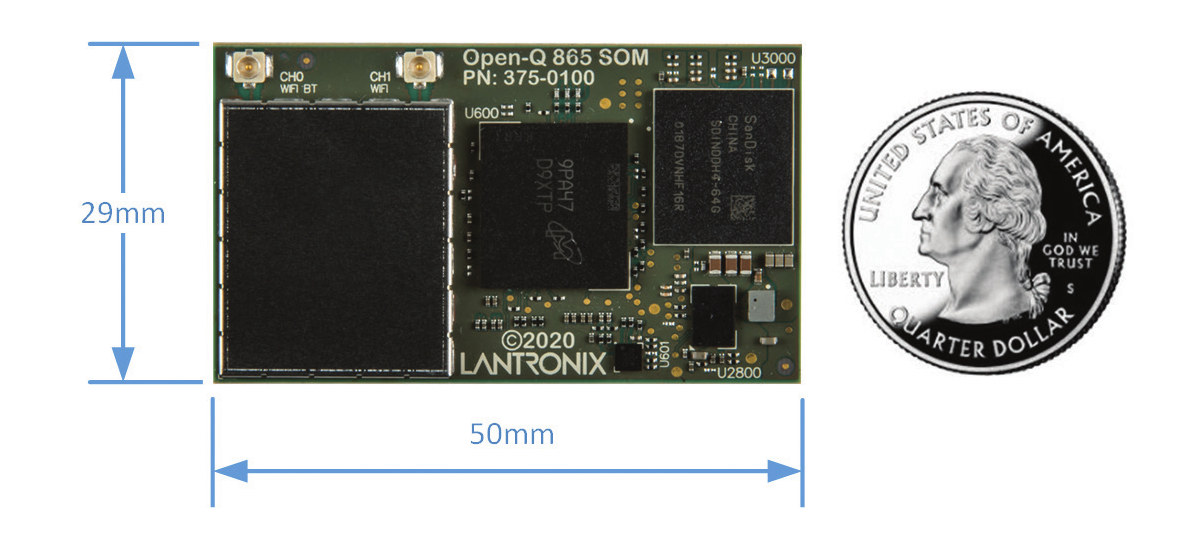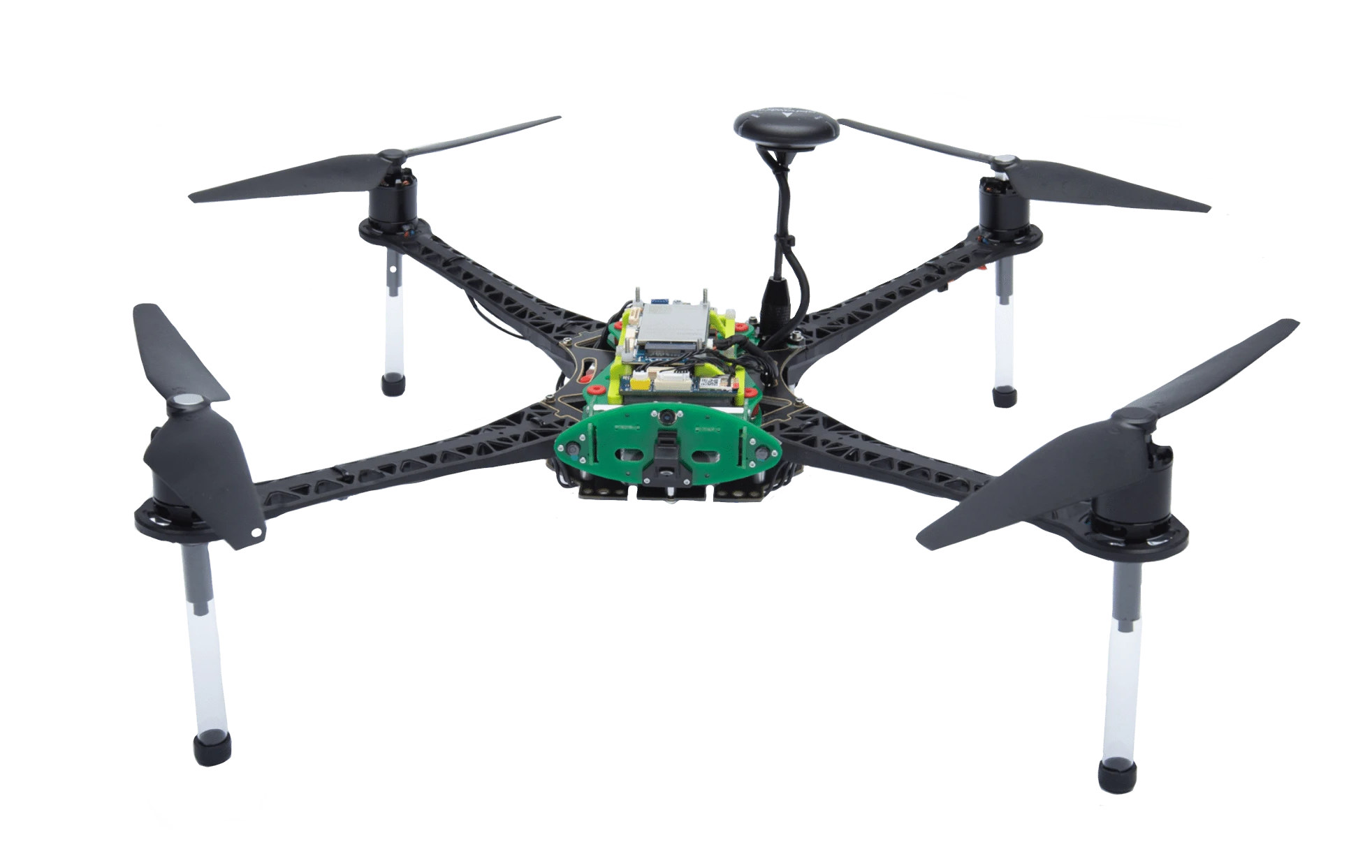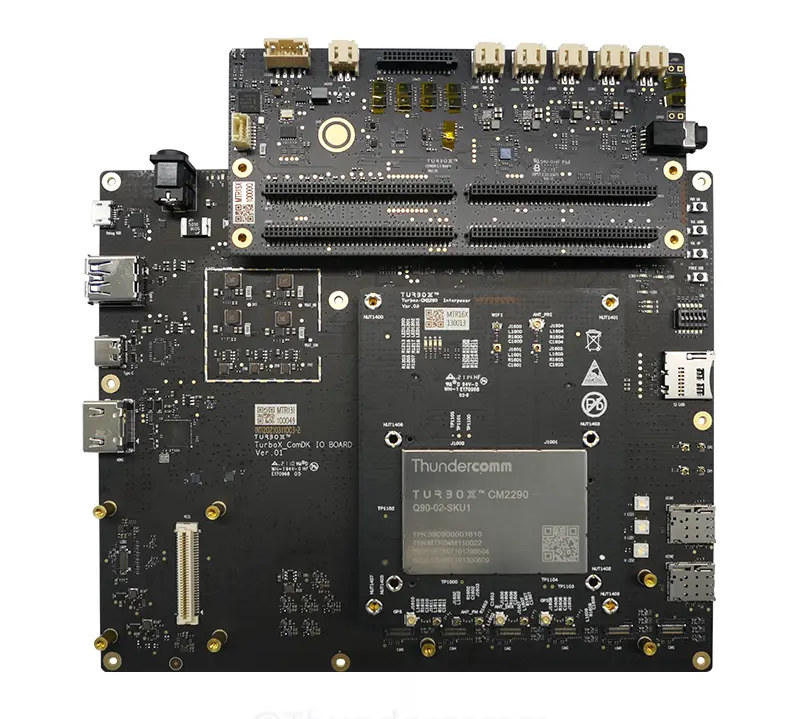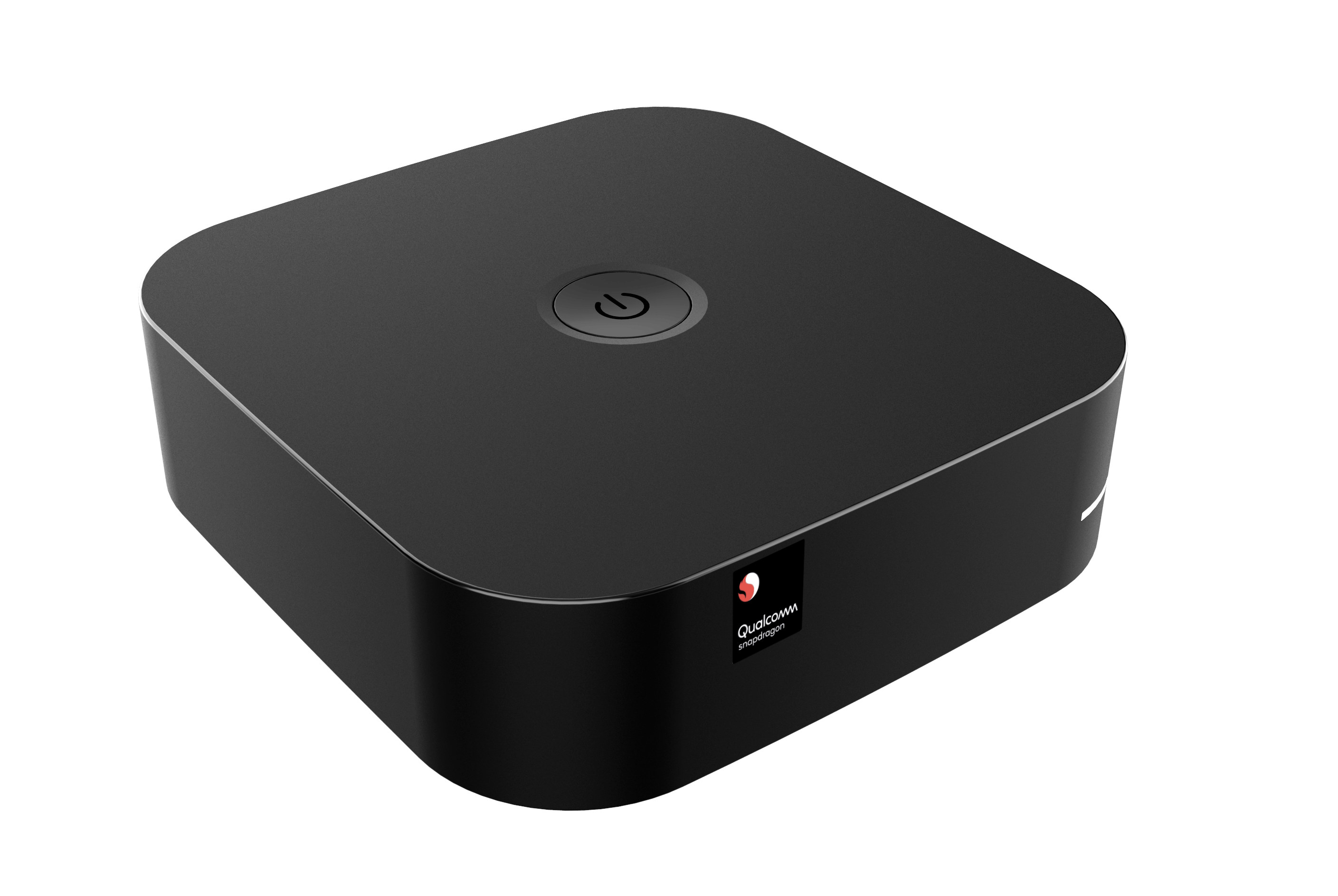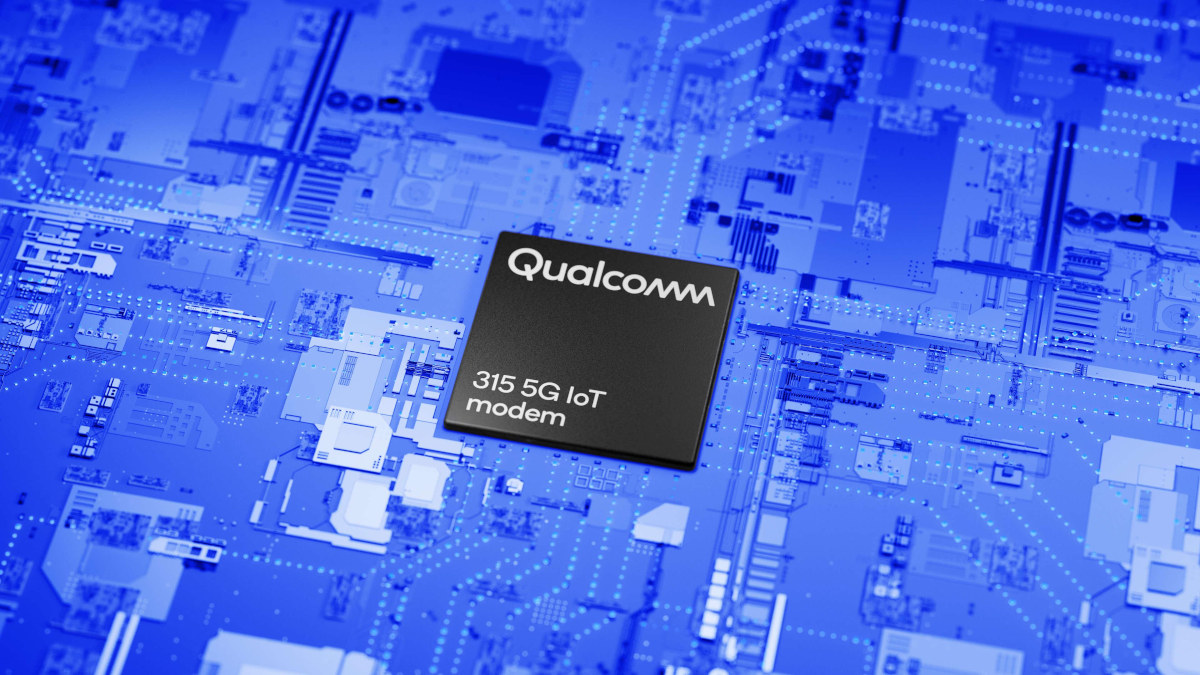BrakTooth is a family of new security vulnerabilities in commercial, closed-source Bluetooth Classic stacks that range from denial of service (DoS) via firmware crashes and deadlocks to arbitrary code execution (ACE) in certain IoT devices. A team from Singapore has discovered 16 new security vulnerabilities after evaluating 13 Bluetooth devices from 11 vendors, but after browsing through the list of certified Bluetooth devices with impacted processors, they estimate it could impact 1400 devices. We can see the list of BrakTooth-impacted SoCs include some familiar names like Intel AX200 (found in many laptops and computers through M.2 cards), Espressif Systems ESP32, Texas Instruments CC2564C, Qualcomm CSR8811/CSR8510, Bluetrum AB32VG1 board (based on AB5301A SoC) which I’ve just reviewed, and more… The good news is that most vendors have either already submitted a patch or working on it. Espressif, Infineon (previously Cypress), and Bluetrum already have released patchsets for their firmware. It’s really […]
$150 Qualcomm Snapdragon 450 mini PC runs Android 10
Azulle Ally is an Android 10 mini PC powered by a Qualcomm Snapdragon 450 octa-core Cortex-A53 processor coupled with 16GB of storage and 2GB of RAM. Equipped with an HDMI port, wired and wireless networking, as well as a pair of USB 3.0 ports, the small-form factor computer is mostly designed for businesses and applications such as digital signage, IoT, edge computing, wayfinding machines, and more. Azulle Ally mini PC specifications: SoC – Qualcomm Snapdragon 450 octa-core Arm Cortex A53 processor @ up to 1.8 GHz with Adreno 506 GPU with OpenGL ES 3.1, OpenCL 2.0 Full, DirectX 12, Hexagon 546 DSP, and 1080p60 video decoder/1080p90 video encoder for H.265, H.265, VP8, and (decode-only) VP9 System Memory – 2GB RAM Storage – 16GB eMMC flash Video Output – Micro HDMI 1.4 port up to 1080p60 Connectivity Ethernet RJ45 port Dual-band 802.11b/g/n/ac WiFi 5 and Bluetooth 4.2 LE USB – 2x […]
Qualcomm QRB5165 system-on-module is made for robotics applications
Lantronix Open-Q 5165RB is a tiny System-on-Module (SoM) based on the same Qualcomm QRB5165 octa-core IoT processor we’ve just seen in Qualcomm Flight RB5 5G Platform high-end drone reference design. The ultra-compact (50x29mm) module comes with 8GB LPDDR5, 128GB UFS flash, multiple MIPI camera and display ports, WiFi 6 and Bluetooth 5.1, and various I/Os. Lantronix Open-Q 5165RB module specifications: SoC – Qualcomm QRB5165 SoC built on 7nm technology with Octa-core CPU with 1x Kryo Gold prime @ 2.84 GHz, 3x Kryo Gold @ 2.42 GHz, 4x Kryo Silver @ 1.81 GHz Hexagon 698 DSP with quad Hexagon Vector eXtensions Adreno™ 650 GPU @ up to 587 MHz Spectra 480 Image Signal Processor Adreno 665 Video Processing unit – Decode up to 4K240/8K60, Encode up to 4K120/8K30, Concurrent 4K60 decode & 4K30 encode for wireless display NPU230 Neural Processing unit SPU240 Secure Processing unit Up to 15 TOPS of combined […]
Qualcomm Flight RB5 5G Platform is a high-end drone reference design with 7 cameras
Leveraging its involvement in the Ingenuity Mars helicopter, Qualcomm has introduced the Qualcomm Flight RB5 5G platform, a high-end drone reference design with 5G and WIFi 6 connectivity, seven cameras up to 8K resolution, and 15 TOPS of AI performance. The platform is based on Qualcomm QRB5165 octa-core processor, a variant of Snapdragon 865 for robotics, also found in Qualcomm Robotics RB5 Platform with support for Intel RealSense D435i (that should reach end-of-life soon), and provides an upgrade to the company’s Flight Pro drone based on Qualcomm Snapdragon 820 platform. Qualcomm Flight RB5 5G Platform key features and specifications: SoC – Qualcomm QRB5165 with eight Kryo 585 cores up to 2.84 GHz, GPU Adreno 650 GPU with support for Open GL ES and OpenCL, Hexagon 698 DSP with HVX, Hexagon Tensor Accelerator, Qualcomm Spectra 480 ISP with dual 14-bit image signal processing Memory – LPDDR5 up to 2750 MHz, LPDDR4x up […]
Qualcomm QCM2290/QCS2290 SoM and Devkit target Industrial IoT applications
Last June, Qualcomm introduced several industrial IoT solutions that we did not cover at the time with Qualcomm QCM2290/QCS2290 IoT chip for camera applications, industrial handhelds, retail and tracking, Qualcomm QCS8250 WiFI 6 & 5G SoC for connected healthcare, digital signage, retail, and video collaboration, Qualcomm QCS6490/QCM6490 WiFI 6E & 5G SoC for connected healthcare, logistics management, retail, transportation, and warehousing, and Qualcomm QCS4290/ QCM4290 designed for cameras, industrial handhelds, and security panels with 4G LTE and WiFi 6 connectivity. Shortly after Qualcomm’s announcement, Thundercomm introduced the TurboX C2290/CM2290 system-on-module respectively based on Qualcomm’s quad-core Cortex-A53 QCS2290 SoC and QCM2290 SoC adding 4G connectivity. The module also offers WiF & Bluetooth, as well as MIPI display & camera interfaces, and the TurboX CM2290/C2290 development kit is also available to get started. TurboX CM2290 and C2290 SoM Specifications: SoC – Qualcomm Snapdragon QCM2290 or QCS2290 quad-core Cortex-A53 processor at up to […]
Software-based neural video decoder leverages AI accelerator on Snapdragon 888
Sometimes hardware blocks got to work on tasks they were not initially designed to handle. For example, AI inference used to be mostly offloaded to the GPU before neural network accelerators became more common in SoC’s. Qualcomm AI Research has now showcased a software-based neural video decoder that leverages both the CPU and AI engine in Snapdragon 888 processor to decode a 1280×704 HD video at over 30 fps without any help from the video decoding unit. The neural video decoder is still a work in progress as it only supports intra frame decoding, and inter frame decoding is being worked on. That means each frame is currently decoded independently without taking into account small changes between frames as all other video codecs do. The CPU handles parallel entropy decoding while the decoder network is accelerated on the 6th generation Qualcomm AI Engine found in Snapdragon 888 mobile platform. This […]
Snapdragon QC710 Developer Kit targets Windows 10 on Arm app development
In order to encourage developers to port their apps to Windows 10 on Arm, Qualcomm and Microsoft have announced the Snapdragon Developer Kit based on a Snapdragon Compute platform and aiming to provide a cost-efficient platform that will be less costly than a laptop. The development kit looks like a mini PC, and while the full specs have not been announced, it could well be powered by the just-announced Snapdragon 7c Gen 2 processor, itself a cheaper version of Snapdragon 7c. Qualcomm did not share photos of all the ports from the developer kit, but the photos we’ve got come with “QC710” file name, and reveal a power button on the top, an LED on one corner, two USB ports, a MicroSD card slot, and a SIM card socket. I’d assume at least one HDMI or DisplayPort at the back, and possibly an Ethernet port, but we just don’t know […]
Qualcomm 315 5G IoT modem announced for 5G IIoT applications
Qualcomm has announced the Qualcomm 315 5G IoT modem just a couple of days after the company’s introduction of Snapdragon 778G 5G SoC and M.2 5G card reference designs based on Snapdragon X65/62 modem. Qualcomm Technologies say it is their first purpose-built Internet of Things modem solution equipped with 5G connectivity and optimized for Industrial IoT (IIoT) applications. Qualcomm 315 5G IoT modem Qualcomm 315 5G IoT modem specifications: CPU – Cortex-A7 core running Linux Cellular connectivity 5G Technology – 3GPP Rel.15 5G NR Peak speeds – Download: 1.54 Gbps; upload: 330 Mbps Modes – SA (standalone), TDD & FDD RF – Adaptive antenna tuning, power tracking Sub-6 GHz Specs – 100 MHz bandwidth, 4×4 MIMO DL, 64 QAM DL/UL 4G LTE Technology – Rel.15 Cat.13 DL, Cat.5 UL Peak speeds – Download: 400 Mbps; upload: 75 Mbps LTE Modes – TDD & FDD LTE RF – 700 MHz to […]


